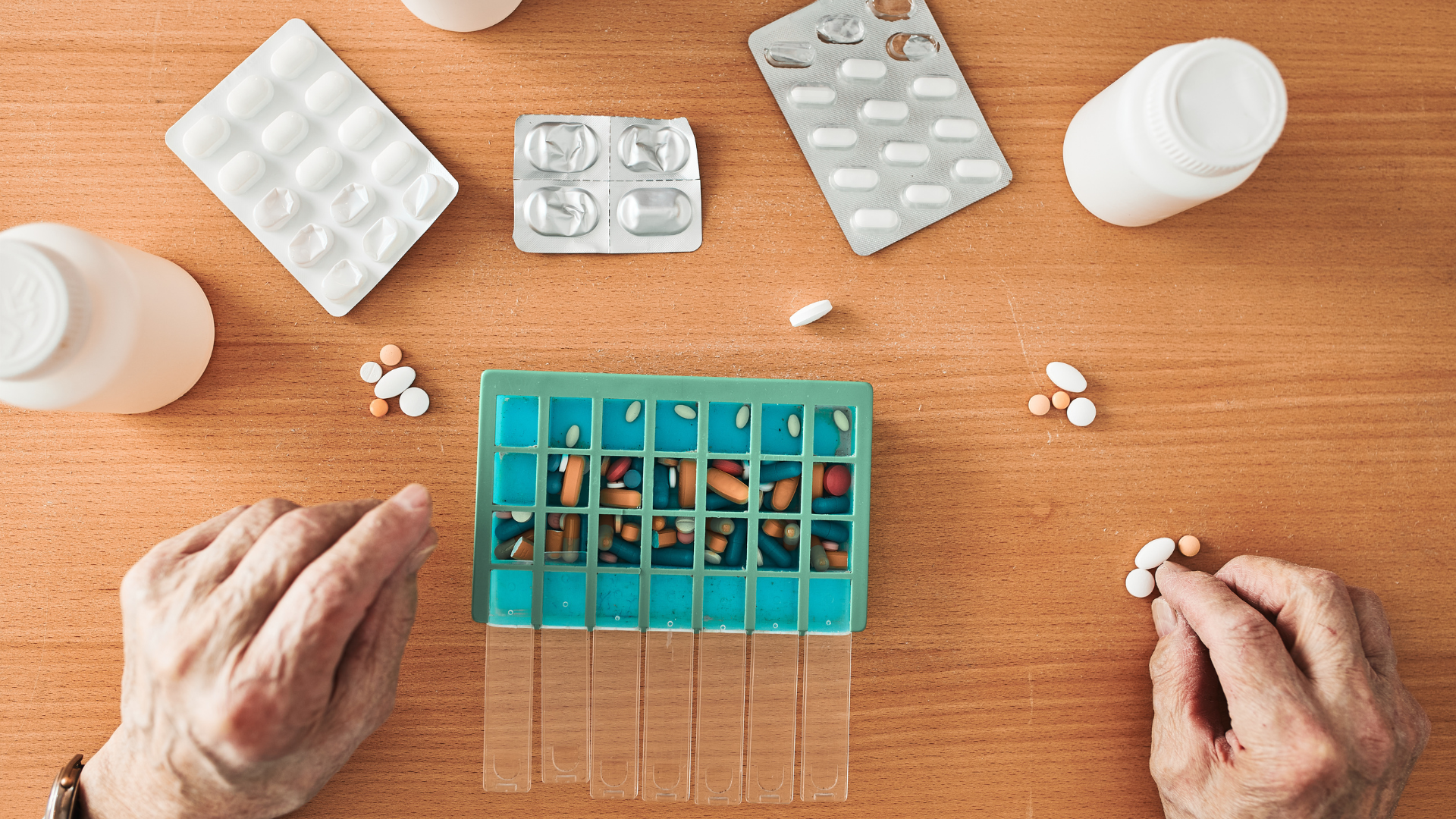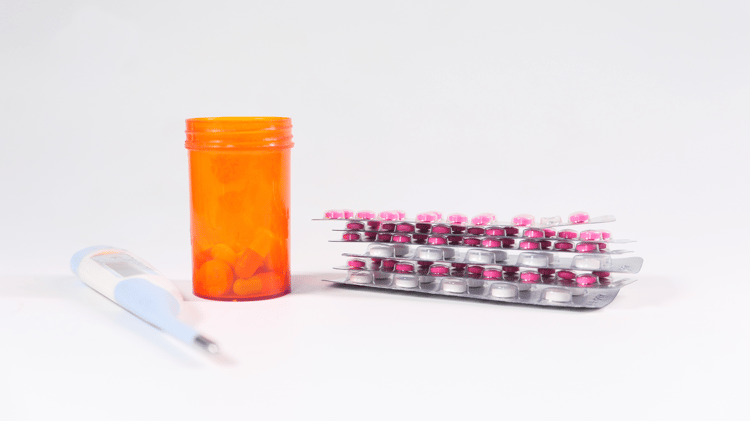Blister Pack vs. Vial Packaging: What's Right for Your Facility?
If there was one thing that astounded American ex-patriate Chad Tyler about living in Europe, it was the stark difference in medication packaging preference.
As the sales director of a pharmaceutical packaging company, Chad immediately noticed that around 85% of dispensed medications in Europe find their way into blister packs. In contrast, medication bottles or vials remain the preferred packaging for Americans, representing 80% of the market share.
The striking discrepancy in the statistics has probably made you ask questions like:
How did that happen?
What is causing such a drastic difference?
And, more importantly, is one type of packaging really better than the other?
What are Medication Blister Packs and Vial Packaging?

A blister pack is tamper-evident packaging consisting of a molded plastic sheet with individual pockets, each containing a single dose. Its compartments are usually sealed with a strong, paper-backed foil designed to keep each medication (or set of medications) separated and protected until it’s ready for use.
Durable, transparent, and tamper-proof, blister packs contain over-the-counter medications, prescription drugs, and vitamins. Depending on the specific medication or product, they come in various sizes and configurations. Here are some examples:
- Unit Dose Blister Packs. These come pre-packaged with a complete course of a single medication for a specific duration. The packaging can also contain printed information about the drug or dose to simplify patient medication management.
- Multi-Dose Compliance Packs. These packs are designed for patients needing multiple medications at different times of the day. They are often used in long-term care facilities and help ensure residents receive the correct medications at the right time. It may include barcode labeling for improved tracking and verification.
Read More: Multi-Dose Compliance Packaging: What Does It Mean for Care Homes?
Vial packaging involves placing medications in small containers that securely hold and preserve the drug’s shelf life. Plastic pill bottles are a common vial packaging choice for over-the-counter medicines, prescription drugs, and supplements because they provide a secure and convenient way to store and transport tablets or capsules.
Blister Packs vs. Bottles: Which Is Better for You?

Deciding which type of medication packaging is right for your facility can be complicated, especially because blister packs and vials have distinct advantages and disadvantages. Here are some comparisons to help you figure out which one best meets your needs:
Medication Adherence
- Blister Pack
-
Blister packs are excellent for medication adherence because they provide individual compartments for each dose, making it easier for staff and patients to track their medications.
-
Multi-dose compliance packaging, for example, pre-packs specific doses and has clear visual cues for medication administration, which cuts medication pass (med pass) preparation time by 90%.
-
- Vial Packaging
- Since patients must use separate containers for each medicine, vial packaging may be less conducive to medication adherence.
- Patients who need to take more than one medicine daily must remember to take out the prescribed dose of each tablet or capsule and organize them into a separate pillbox if they want more assistance in managing their medication adherence.
Medication Control
- Blister Pack
- With each dose stored in individual compartments, blister packs offer precise control over medication administration and help prevent overdosing.
-
More advanced packaging like DosePacker’s proprietary multi-dose compliance packs works with other pharmacy technology to verify accurate medication administration and speed up a facility's med pass by over 50%.
- Vial Packaging
- Medication bottles offer manual dosage control, allowing patients to measure their own doses when necessary. While this can be beneficial for medications requiring customization, vial packaging doesn’t provide the same level of organization and control as blister packs.
Medication Potency
- Blister Pack
- Moisture, air, and light exposure can cause tablets to degrade and lose potency. However, when using a high-quality blister pack, medication can stay potent and protected in each pill cavity until you remove it for administration.
- Vial Packaging
- Vial packaging has strong barrier protection because it comes with an induction seal.
- However, after the initial opening of the bottle, that high level of protection is gone. Every time one opens the vial, they introduce light, air, and moisture to the medicine inside, affecting its quality and potency.
Compliance
- Blister Pack
- Blister packs provide a structured and organized way to package medications, which makes it easier for healthcare professionals and care facility staff to document and track medication administration accurately.
-
By leveraging QR code technology and modern care facility software, care facilities can automate charting, documentation, and dose verification while using blister packs, helping them stay compliant with legal and regulatory standards.
- Vial Packaging
- Medication bottles offer flexibility in dosing and administration, allowing healthcare professionals to adapt to changing patient needs and still maintain documentation compliance.
- However, because they provide less structure and require manual documentation, vial packaging can lead to lower compliance, especially for patients who rely on structured medication regimens.
Child Safety
- Blister Pack
- Blister
packs with child-resistant features require one to puncture or tear into the package to access the substance inside—something children can’t easily do.
-
Because doses are packaged separately in blister packages, a person must open cavities individually to access the contents. This offers a significantly higher level of child safety.
- Blister
- Vial Packaging
- Medication bottles with child-resistant features are resealable and have a safety cap. To open a pill bottle with child-resistant features, one must push (or squeeze) the lid and turn it.
- However, child-resistant features are useless when bottle caps are left open. According to a white paper by Pharmaworks, improperly closed containers expose medication and provide easier access for a curious child.
Environmental Impact
- Blister Pack:
- White most blister packs aren’t recyclable and often end up in landfills or the ocean after a single use, companies like DosePacker produce ones that are biodegradable and recyclable.
- These also help alleviate medication waste pollution by reducing the number of leftover and expired drugs (which often go unused and end up as waste).
- Vial Packaging
- Most medication bottles are made from plastic number 5 or polypropylene (PP). It’s the second-most widely produced plastic and is recyclable.
- To ensure your pill bottles are recyclable, flip them over, check the symbol on the bottom, and then check what types of plastics your municipality accepts.
Read More: How to Reduce Hazardous Pharmaceutical Waste With Compliance Packaging
Serve Your Patients Better With Medication Packaging By DosePacker

Whether blister packs or vials best meet your healthcare facility’s prescription packaging needs, what's ultimately important is the quality of the products your patients receive. When investing in your organization’s operations, take the smart route and partner with a reputable company like DosePacker.
Trusted by pharmacies, providers, and long-term facilities, DosePacker delivers a comprehensive suite of solutions designed to enhance patient experience, improve medication adherence, and streamline pharmacy operations.
From medication management software and applications to prescription packaging and storage devices, DosePacker empowers and equips your facility with the tools to help better serve your patients.
